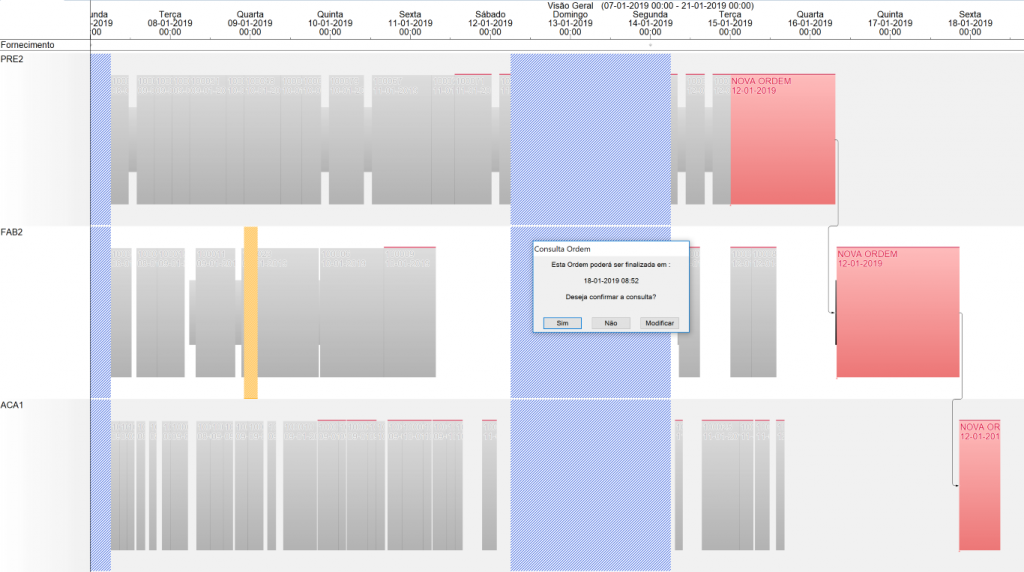The Delivery Date Promise Challenge

PRODUCTION AND DELIVERY DATESWhenwe work with industry, we see many different orientations of production systems: make-to-stock, make-to-order, assembly-to-order, engineering-to-order, as well as hybrid systems that mix these different orientations. It's quite normal for some industries to choose products that have a lot of demand and long life cycles to be produced for stock in order to reduce lead times for resupply to the market and gain production efficiency, while customized products that don't have a lot of continuous demand or have a very short life cycle (as in the fashion industry) are only produced on demand.While the challenge for make-to-stock (MTS) is to produce in the right quantities so as not to generate obsolescence or high inventory costs, the challenge for make-to-order (MTO) is to deliver your products quickly from the moment a customer generates an order, without jeopardizing production efficiency and, perhaps even more importantly, without delaying delivery! To put it plainly, the fact is that we have two delivery dates: the one the customer wants to receive the product by and the one the industry commits to delivering it by. These dates are often very different from each other. There are cases where you don't have a choice and the customer defines the delivery date that the supplier must meet based on market requirements and standards. But there are still cases where there is a dialog between the companies to define a definitive delivery date. It is at this point that PPCP plays a crucial role in providing the best customer service (or at least it should).THE PROMESSIn order todefine a delivery date that is achievable by production, the PPCP/PPCPM area should ideally be responsible for this, since it is the area capable of analyzing all the production variables (current production volume, materials, available resources, shifts, maintenance, tools, etc.) in order to see when and how these orders can enter production. In many cases we see companies working with fixed lead times to promise delivery dates, sometimes with standard values for each and every product. However, the reality is that each product has specific manufacturing routes and needs, which can mean that one product can be produced much more quickly than another, and it doesn't make sense for both to have the same deadline. Therefore, it is recommended that the methods and processes engineering areas analyze and classify the products appropriately according to the production effort of each one. It's not a problem to work with fixed lead times per product family and, if the products are similar, it's also not wrong to have a fixed lead time for all your products. This can be a very interesting facilitator for the commercial area. Whether it's an order that arrives without a delivery date and PPCP defines it and passes it on to the commercial area to pass on to the customer, or an order that arrives with a delivery date and PPCP confirms whether or not it's possible to deliver that order on time, this area needs to do so in a way that is consistent with the reality of the factory(ies), otherwise we'll be making a promise that we don't know if we'll be able to keep. And there's nothing worse for a company's image, apart from product quality factors, than failing to meet delivery deadlines.PROMISE WHAT YOU CAN DELIVERIt'sat these times that technological support can give us the backing we need to avoid unnecessary delays and inconvenience. In order to have a good delivery date promise process, we need to have two things very well implemented and internalized by the industry areas: an agile communication and information process between the commercial and PPCP areas that adheres to the company's commercial characteristics (1), as well as an accurate and reliable production scheduling system that can evaluate production variables well (2).[caption id="attachment_2067" align="aligncenter" width="547"]

Viable Delivery Date Query in Preactor APS Software[/caption]To establish this process from the first point raised, it is necessary to understand whether the market needs immediate responses to demands or whether it is possible to standardize a process with time windows to carry out mass order analyses. For the first case, a higher level of automation is required, as orders will arrive in a time-dispersed manner and need a quick and individualized response, making the PPCP's participation more focused on generating the business rules so that this system can take place without having to have a person on the team available at all times to promise deadlines. In the second case, where you can work with deadlines of one or two shifts for the return of information, you can create a process with greater involvement between the areas and scheduled simulations to generate delivery dates for all orders received within a time window. This means that, in the event of not having the capacity to produce them all, or having to modify the factory's schedule more thoroughly to meet a certain need, there can be a closely aligned dialog and consensus between sales and PPCP to make decisions.As for the second important point, regarding a reliable system for production scheduling, the essential thing is to take into account that our factory(ies) have finite capacity, and that this cannot be deciphered just by analyzing the machine/man load, but rather we need a system capable of dealing with the most different variables possible, from the machinery available to produce, the synchronism between production operations, to critical restrictions on tools, manpower or even physical space. Otherwise, confirming an order by looking at a spreadsheet or tossing a coin is just as effective. To find out what these systems might be and how they work, find out more about Preactor APS and get in touch with NEO![noptin-form id=2822]

